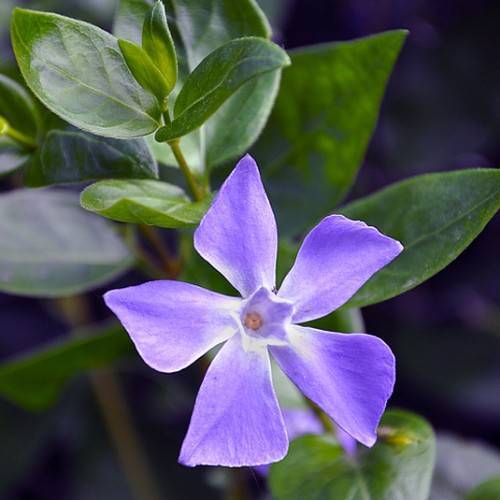
lesser periwinkle
Vinca minor 'Honeydew'
Also Known As - creeping myrtleCycle:
Herbaceous Perennial
Watering:
Minimum
Hardiness Zone:
4 - 8
Flowers:
Flowers In Spring
Sun:
Filtered shade, Full sun
Soil:
Acidic, Well-drained
Fruits:
Fruits In Spring Ready In Fall
Leaf:
Yes
Growth Rate:
High
Maintenance:
Moderate
Drought Tolerant:
Yes
Salt Tolerant:
Yes
Care Level:
Low
watering
The best way to water lesser periwinkle (Vinca minor 'Honeydew') is to water thoroughly but infrequently. Depending on the season and the plant's immediate environment, you should water every 7 to 10 days if temperatures are mild, or every 5 to 7 days if temperatures are high. When watering, be sure to moisten the entire root zone so that the water penetrates deeply. Avoid overwatering, which can cause the plant to become stressed. Check the soil 1-2 inches down to determine if the plant needs water. If it is still quite moist, the plant does not need water.
sunlight
The lesser periwinkle (Vinca minor 'Honeydew') is an evergreen plant species that typically grows in partial to full shade. It will tolerate some direct sunlight, but too much intense sun can cause leaf scorch. It is best to site this plant in an area that receives 2 to 6 hours of direct sunlight each day, ideally in the morning or late afternoon when the rays are not as intense. The lesser periwinkle will benefit from some direct sunlight during the cooler months of the year, but too much sun can damage the plant during the hotter months. It is important to monitor the sunlight that this plant receives and adjust its location if necessary.
pruning
The optimal pruning period for Vinca minor 'Honeydew' is late winter/early spring, before any new growth begins. This species of plant only requires light pruning; it's a good idea to remove any dead, weak, or damaged stems as soon as they are spotted. It is also recommended to cut back any mature stems that are beginning to straggle or become too woody. There is no need to prune heavily; a light touch is all that is required. During its regular season, Vinca minor 'Honeydew' should not be cut back too severely; only light pruning should be done once or twice a year.
